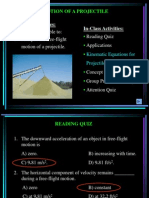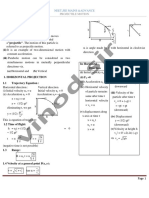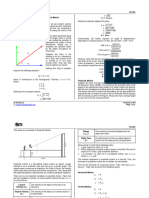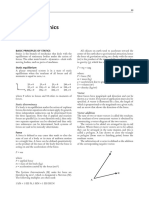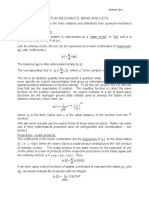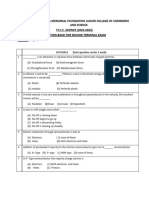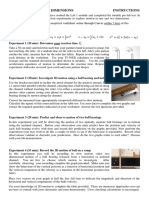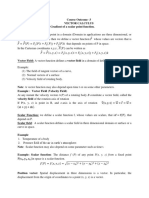0% found this document useful (0 votes)
177 views6 pagesHow To Solve A Projectile Motion Problem
1. To solve a projectile motion problem, first draw the situation with knowns like initial velocity, angle, and coordinates. Identify unknowns like displacement.
2. Select the appropriate kinematics equations for horizontal and vertical motion. Horizontal motion is unaccelerated while vertical motion is accelerated by gravity.
3. Apply the equations separately for horizontal and vertical motion to calculate displacement, velocity, and other values at any time. Indirect implications can provide additional information, like using time calculated from vertical motion in the horizontal equation.
4. Key equations are horizontal displacement = initial velocity x time, and vertical displacement = (1/2)gt^2 + initial velocity y time + initial position.
Uploaded by
Maria Camila Alvarado MartinezCopyright
© © All Rights Reserved
We take content rights seriously. If you suspect this is your content, claim it here.
Available Formats
Download as DOCX, PDF, TXT or read online on Scribd
0% found this document useful (0 votes)
177 views6 pagesHow To Solve A Projectile Motion Problem
1. To solve a projectile motion problem, first draw the situation with knowns like initial velocity, angle, and coordinates. Identify unknowns like displacement.
2. Select the appropriate kinematics equations for horizontal and vertical motion. Horizontal motion is unaccelerated while vertical motion is accelerated by gravity.
3. Apply the equations separately for horizontal and vertical motion to calculate displacement, velocity, and other values at any time. Indirect implications can provide additional information, like using time calculated from vertical motion in the horizontal equation.
4. Key equations are horizontal displacement = initial velocity x time, and vertical displacement = (1/2)gt^2 + initial velocity y time + initial position.
Uploaded by
Maria Camila Alvarado MartinezCopyright
© © All Rights Reserved
We take content rights seriously. If you suspect this is your content, claim it here.
Available Formats
Download as DOCX, PDF, TXT or read online on Scribd
/ 6


























